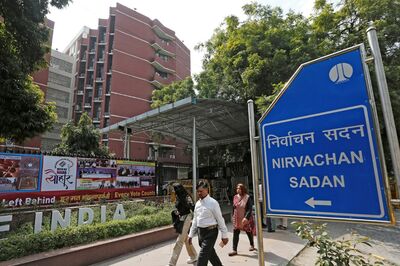
views
Gandhinagar: A committee headed by state Finance Minister Vaju Vala would review the water situation in Gujarat following deficient rainfall, government spokesperson Jaynarayan Vyas said in Gandhinagar on Wednesday.
The decision was taken at the cabinet meeting on Wednesday.
The seven-member committee of Ministers would look into availability of water for drinking and irrigation, fodder for animals, and other issues.
Cabinet also decided to formulate water management contingency plan.
Because of the deficient rainfall in the western region and low water arrival in Narmada canal, the government has stopped water supply for irrigation from the reservoirs in Saurashtra region, a major agricultural belt, said Minister for Water Resources Nitin Patel.
For the implementation and monitoring of the contingency plan, a committee headed by Chief Secretary AK Joti had been been constituted, Vyas said.
Narmada canal gets 4,000 to 5,000 cusecs of water per day, but is dependent on supply from Madhya Pradesh, which hinges on electricity generation there, Patel said.
The bad rains in Gujarat, Rajasthan, Maharashtra and Madhya Pradesh had impacted catchment area of Narmada and Ukai dams, the Minister said, clarifying that there was no shortage of drinking water.
However, the state government was still supplying drinking water through tankers to 267 villages, where shortage was reported or water had become saline, Patel said.
The government had deployed two platoons of State Reserve Police (SRP) in certain towns of Saurashtra including Dhangadra and Halwad to prevent illegal drawing of water from Narmada canal, he said. "We have asked the state home department to sanction another two platoons of SRP, " Patel added.
The state government had said that situation in several parts of Saurashtra and other regions, notably Kutch, Porbandar and Dahod, was grim.
Patel said that if necessary the state government would fully subsidies the cost of installing tube wells and hand pumps, and was also exploring the possibility of transferring water from one reservoir to another.




















Comments
0 comment